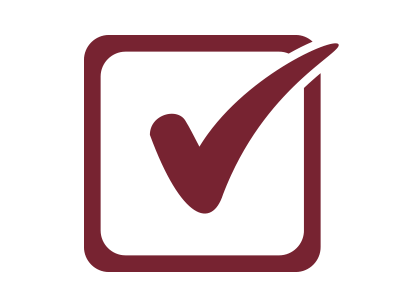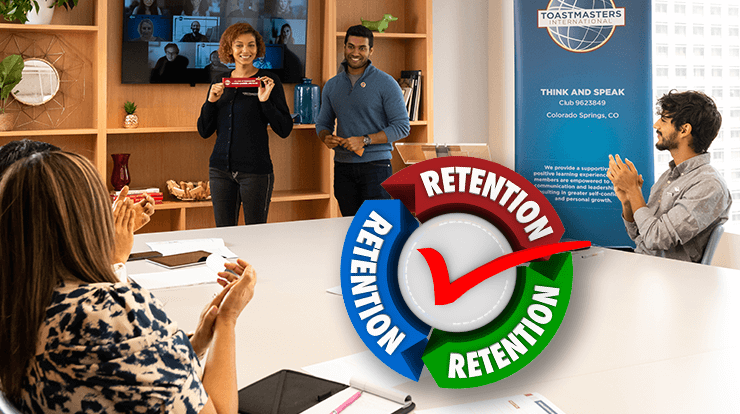
While Toastmasters is a vast international organization, spanning 150 countries, each member’s experience is based in their club. The club is the core of the entire Toastmasters program.
Toastmasters founder Dr. Ralph C. Smedley knew he wanted to avoid a classroom feeling, and strongly adhered to the principle of learning by doing, and improving through constructive criticism. He also recognized that people “learn best in moments of enjoyment” and emphasized that clubs need to be convivial, supportive places, where members felt comfortable and encouraged as they progressed.
Interestingly, for as much as Toastmasters has changed over the years, much of the club experience—including the agenda and meeting roles—has remained true to Smedley’s vision. In fact, if he were to attend a club today, while the technology, the diversity of members, the speech topics, and some meeting locations would likely seem perplexing, he would undoubtedly recognize the flow of the meeting itself.
Early Club Meetings
On November 5, 1924, the early members put together a standard agenda for meetings and determined club officer roles. Meetings were to include prepared speeches, a critic for those speeches and the overall meeting (today called evaluators and General Evaluator), and an impromptu speaking section (dubbed Table Topics® in 1935), as well as a Toastmaster, and assigned meeting roles. Club officers were to include a President, a Vice President, and a Secretary-Treasurer.
Sound familiar?
It quickly became apparent that the quality of evaluations could vary wildly, and by 1927, a standardized critique sheet was developed to help guide the process. Each speaker had four evaluators (then called “critics”) prepare comments for their speech.

1936 evaluation form
Speech Topics and Themes
The first speech a member gives to their club has always been a way to introduce themselves. Smedley himself referred to them as Ice Breakers.
Today, the majority of speeches are based around the Pathways project material. However, the first education manual wasn’t produced until 1942, and prior to that, members frequently chose their speech topics based on the club meeting theme, something all clubs regularly determined. A theme would be announced well in advance and speakers would either choose their topics, or be assigned a topic, based on that theme.
Some themes from those early meetings include: “What I Do for a Living” and “Santa Ana, City of Schools and Churches.” The calendar year also provided inspiration, with themes such as Abraham Lincoln (near his birthday), vacations, and various holidays. As Smedley put it, “There was never any difficulty in finding speech material. We just applied a bit of originality and imagination.”
At the November 12, 1924, meeting the theme was California, and speeches included “Save the Redwoods,” “Building More and Better Highways,” and “Capitalizing on the Tourists.”
Themed meetings remain still popular with clubs today—everything from Academy-Award-like events to backward meetings to costume-inspired sessions.
Meeting Roles and Locations
Despite having similar agendas, different clubs have always had different personalities—some are more formal, some more casual, and some cater to a profession, hobby, or other interest. Some are sponsored by corporations. Some are formed in prisons.
In the early years, meetings were held over dinner, with each member either bringing a dish or chipping in a bit of money to keep costs down. Having a dinner meeting made it easier for members to get to know each other, thus encouraging the desired congenial atmosphere.
While some meetings today still take place over dinner, there is no prescribed meeting location—clubs gather everywhere from a corporate office to a community center, a library, or, in the case of online meetings, in cyberspace. Some meet every week for an hour, some for two hours every two weeks. Membership numbers can range from eight to over 100.
Wherever the club meets, meeting roles still include a Toastmaster, a Table Topicsmaster, a timer, and a General Evaluator (or the Evening Critic, as it was first named). Roles such as Ah-Counter and grammarian are also common.
Some clubs put their own spin on these roles, and the meeting may start with a joke from the Jokemaster, or a poem read by the Poetmaster. Some clubs begin with a comedy-inspired improv session, to loosen and relax members. There may be a Guest Greeter to ensure nonmembers are welcomed, or there may be a Quiz Master, who periodically tests members’ listening skills. The possibilities are endless, and add flavor and personality to meetings, as well as give additional opportunities for members to speak and lead.
Clubs Today
Community clubs, which are open to everyone and have a range of members, are the most prevalent. In the 1980s and 1990s, the majority of clubs were corporate clubs, which are sponsored by an organization for its employees.
Some clubs bring together people with similar interests or hobbies—such as cooking, books, photography, or online gaming. Some are designed for people with similar challenges, such as a stutter, vision impairments, autism, or neurological disorders. Advanced clubs serve members who want to advance their speaking skills and be challenged by other advanced speakers.
Sometimes clubs have served as a poignant reminder of the need for camaraderie and structure in the darkest of times. Clubs have formed in prisoner-of-war camps in both World War II and the Vietnam War, providing a way to keep the men’s minds sharp and bring a sense of purpose, as well as the chance to develop a skill while bonding with others.
During the COVID pandemic, many members felt their online club meetings helped them maintain a sense of connection at a time when feelings of isolation were so prevalent.
Club meetings provide a level playing field, where everyone is welcome. They provide an opportunity for people from diverse backgrounds—socioeconomic, cultural, ethnic, gender—to share stories, listen to each other, and grow together.
Through listening and speaking, members are exposed to and can better understand a variety of people they might not otherwise get to know. A club is a melting pot of learning individuals, something unique to Toastmasters, particularly in a world where it can be easy to only interact with people who are similar.
Related Articles

Club Experience
Club Quality Checklist

Club Experience
6 Tips for Successful Club Meetings

Club Experience



 Previous
Previous

 Previous Article
Previous Article